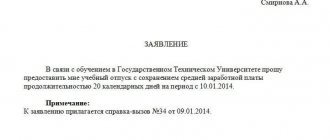FREE CONSULTATION WITH A LAWYER
Tel.
+7 (800) 302-65-54 Free in Russia
Kinship refers to biological and psychological connections between people based on a common ancestor/ancestors. Kinship is characterized by degree (how close people are to each other) and line (assessment of closeness based on the criterion of time - grandfather, father, grandson, etc.). A complete description of the degrees of relationship and the rules for determining them can be found in the article.
Expert opinion
Sobolev Dmitry
Administrative offenses lawyer, website expert
Previously, we talked about who is considered close relatives by law, we recommend that you also read this information here.
The legislative framework
Issues of kinship are primarily regulated by family and civil law. Thus, the Civil Code defines the concept of degree of kinship as the number of births that separate one relative from another. For example, the relationship between mother and son is of the first degree, and the relationship between grandfather and grandson is of the second degree, because in the first case, family members are separated by 1 birth, and in the second - 2.
Lines of inheritance are determined through the degree of kinship. The first is for close relatives, which, along with blood relatives, also includes the legal spouse (this is the only exception).
An exhaustive list of close relatives is contained in family law - these are:
- parents;
- children;
- grandmothers, grandfathers;
- grandchildren, granddaughters;
- brothers and sisters.
Moreover, in the case of brothers and sisters, it does not matter how many common parents they have. If they have a common father and mother, these are half-relatives, but if only 1 of the parents are half-relatives. A special case of stepbrothers are uterine ones (only the mother is common).
The presented article of the Family Code describes the concept of line of kinship: these are several generations of relatives that are built according to a time criterion. The lines can be ascending, i.e. “rising” upward from children to parents, then to grandparents, etc., as well as descending, i.e. going in the opposite direction.
What it is
Kinship is a kind of connection between people who have common ancestors. To define relationship, a term such as degree is used. The degrees are counted based on the number of births that occurred in the family. For example, father and son are separated by only one birth, therefore the degree of kinship in this case is the first. At the same time, brothers or sisters can only be half-blooded if they have both parents in common. Stepchildren are children who have different parents, but whose father or mother was married to the stepparent. There are several levels of kinship:
| First | Includes parents and their children. This means not only relatives, but also step and adopted children. |
If you have any questions, you can consult for free via chat with a lawyer at the bottom of the screen or call by phone (consultation is free), we work around the clock.
Article 1142 of the Civil Code of the Russian Federation. Heirs of the first stage Article 1143 of the Civil Code of the Russian Federation. Heirs of the second stage Article 1144 of the Civil Code of the Russian Federation. Heirs of the third stage Second cousins are most often not perceived from a legal point of view, since it is believed that the connection is already too distant. In some cases, the seventh stage is also mentioned: stepfathers, stepsons, stepmothers and stepdaughters. They are taken into account when dividing the inheritance only if the deceased has no other relatives.
Related connections: table and diagram
Thus, the key concept in determining family ties is the degree of relationship. The main degrees are children, parents, followed by grandparents, brothers and sisters, uncles, etc. Suppose a son or daughter considers his connections with other family members from his parents upward (ascending line). Then the relationship diagram for him will look like this.
| relation degree | name (status) of relative | name of this relative's child |
| 1 | father mother | brother, sister |
| 2 | brothers, sisters, | nephew niece |
| grandparents | father mother | |
| 3 | uncles, aunts | cousin, sister (cousin) |
| 4 | great-grandparents | grandmothers, grandfathers |
| 5 | great-uncles, grandmothers | cousins, aunts |
| 6 | cousins, aunts | second cousins |
| cousins, nephews, nieces | great-nephew, niece |
The connections can be shown more clearly in the form of a diagram. It describes direct and lateral kinship. A straight line means a line that goes directly up or down (for example, from a son to his father, then to his grandfather, etc.). By lateral we mean a line that is adjacent to a straight line (for example, through an uncle, his son, who is a cousin, his children, his children’s children, etc.).
In the diagram, the degrees of direct relationship are indicated by ordinary Arabic numerals (1, 2, 3, 4), and lateral ones - by Roman numerals (I, II, III, IV).
How to prove relationship?
In inheritance cases, citizens quite often have the need to prove the degree of relationship with the deceased. What to do if there are no documents confirming this fact?
| Download the application form |
- Prove relationship based on testimony.
- Contact the archive to obtain the appropriate certificate (if documents have been lost).
- Go to court to establish the fact of relationship.
When going to court, we recommend following the following algorithm:
- Prepare a claim and attach to it all documents that, in your opinion, can confirm your relationship with the deceased, for example, personal correspondence.
- In the application, indicate the purpose of establishing the fact of kinship with the citizen - receiving an inheritance.
- File a claim with the district court at the applicant’s place of residence and pay a state fee of 300 rubles.
- Wait for the court's decision.
The applicant’s evidence base can vary from witness statements to video recordings. The main condition is the plaintiff’s connection with the deceased. We draw your attention to the fact that the court act does not replace documents issued by the registry office, but is the basis for registering the fact of kinship. After receiving all documents on kinship, they must be presented to a notary and inheritance must be entered into.
Scheme of your relationships
In law and in practice, property relations . This is the only case when kinship is built not on the basis of blood ties (i.e., a common biological ancestor), but on the basis of actual cohabitation - marriage. Thus, a husband and wife, subject to official marriage, are recognized as close relatives. Therefore, all members of their families on both sides can also be considered distant relatives in relation to property.
In this case, the acquisition of kinship is achieved after receiving a marriage certificate. However, only spouses have obligations to each other. In other words, the husband is not obliged to take care of his mother-in-law, just as the wife is not obliged to take care of her mother-in-law. After the dissolution of the marriage, kinship in relation to property is lost. The only obligations that will remain with the former spouses will be related to the upbringing/maintenance of minor children, as well as the division of common property.
In practice, they also distinguish spiritual kinship , which is achieved by acquiring a godfather or godfather after baptism. This is the name given to godparents who are not recognized as relatives by law. Therefore, from a legal point of view, such connections do not matter.
2 ways to prove relationship: sample statement of claim
If you have any questions, you can consult for free via chat with a lawyer at the bottom of the screen or call by phone (consultation is free), we work around the clock.
Often a citizen has to prove his relationship (for example, for immigration purposes or to confirm inheritance rights). In this case, he can confirm the connections in 2 ways:
- Pre-trial procedure - contacting the archive and other organizations to obtain documents evidencing family ties.
- Applying to the court to recognize a living or deceased person as a relative in relation to oneself. For this purpose, witnesses are involved, and, if necessary, a DNA test and other examinations are carried out.
The statement of claim must be filed in the city (or district) court. The document is formatted in any form and contains the following sections:
- Name of the court, full name, address, contact details of the applicant and interested parties (if any).
- Description of the reason why it is necessary to establish the degree of relationship.
- Justification of your connection.
- Claim.
- Attachments – a list of documents confirming the applicant’s position.
- Date, signature, signature description (last name, initials).
When drawing up an application, you can use this sample as a guide.
The degree of kinship is determined by the number of births that separate people from a common ancestor. The degree of kinship is usually used to designate only blood relations; the same connections that arise as a result of the marriage of two people are called properties. You will learn how to correctly determine the degree of relationship from the article.
What to indicate in the questionnaire about the degree of relationship
When applying for a job, applying for a loan, and in many other cases, organizations or government bodies often ask to indicate close and other relatives in the application form, including their degree of closeness. To correctly fill out this column, you need to determine:
- Actually the degree of relationship.
- Status of relative (former or current - for example, ex-husband).
- Indicate his personal data (full name, address) and other information (place of work, etc., if required).
It is important to understand that the degree of relationship is formulated officially, i.e.:
- not “dad”, but “father”;
- not “mother”, but “mother”;
- not “cousin”, but “cousin”, etc.
The name of the relative is indicated only if it is current. If for some reason he changed his data, this information can also be reflected. For example, a citizen provides information about his ex-wife, who has returned her maiden name. He can write down: Andreeva (Bogdanova) Ekaterina Sergeevna (first write down the current surname, and then indicate the previous one in brackets).
Information about place and date of birth, current address is indicated in accordance with passport information. If necessary, you can also enter your actual residential address. If a citizen does not know anything about a relative (including whether he is alive or dead), they formulate this: “I have no information about my father, I do not maintain contact with him.” If necessary, you can designate a specific time interval - “I have not maintained contact since July 2005.”
Filling out the column on the degree of relationship should not be treated formally. In most cases, organizations or government bodies check relatives very carefully and may refuse to hire, transfer to another department, etc. including on the basis of providing false data. Therefore, if the exact information is unknown, it is better to write: “I have no information.”
What to write when filling out the form
There is no need to write a list of all relatives in the degree of relationship column on the application form. You just need to indicate the closest ones:
- both parents;
- their children;
- spouse;
- brothers and sisters.
You will also need to provide the following information:
- Full name, if they were changed earlier, then the current ones should be written first, and the previous ones in brackets;
- place and time of birth;
- registration and place of residence;
- place of education, place of work, position held.
If you are filling out an application for a visa to another country, you should check with the receiving party as to how they correctly call this or that degree of relationship.
Legal meaning of kinship
Issues of family ties acquire special significance in different cases:
- When it comes to transferring property based on inheritance. In this case, any person whose name is indicated in the will (even if he is not a blood relative) can act as an heir.
On the other hand, the legislation also defines compulsory heirs, who in any case must receive their share. Otherwise, all property is distributed in order, which depends on the degree and line of relationship (more details in the diagram).
- In the case of division of common property after divorce (official dissolution of marriage) or during family relations. The division is made between spouses, and the court also takes into account the interests of their minor children.
- Finally, the degree of relationship is of great importance from the point of view of transmitting testimony. Thus, criminal law guarantees the right not to testify against oneself, as well as against close relatives. Among them are spouses, children (including adopted ones), parents (including adopted ones), as well as grandchildren/granddaughters, grandparents.
How to prove family ties
Inheritance cases are characterized by the fact that in many cases it is necessary to prove the degree of relationship with the deceased. In this case, you will need documents confirming the existence of family ties. If the citizen does not have such papers, then one of the following methods can be used:
- use of testimony;
- in case of loss of documents, contact the archive for their restoration;
- send a corresponding application to the court.
Going to court requires following a certain procedure:
- First you need to collect the necessary documents and prepare a statement of claim. It is important to select documents that can at least somehow confirm the connection with the deceased. This could be personal correspondence or other similar papers.
- The application should indicate “obtaining an inheritance” as the purpose of filing the claim.
- Submit an application with attached documents to the nearest district court. You must pay a state fee, the amount of which is 300 rubles. A receipt for payment must also be attached to the application.
- Bring all the necessary evidence and wait for the court's decision.
Close relatives according to the Family Code of the Russian Federation
Close relatives, according to the UK, are a certain circle of persons specified by law. This concept is explained very well by Art. No. 14 SK, where all degrees of relationship are described in great detail: blood and innate.
According to the contents of this document, this category includes:
- Members of the same family who are related to each other by a direct ascending line (kinship going from a person to his distant ancestors) or descending (coming directly from his ancestors). According to this point of view, the closest relationship is considered to be the blood relationship between parents and their children, grandparents and grandchildren. It’s a pity that people have a small number of such relatives: unfortunately, there aren’t many long-lived people now, but I’d really like to talk to my great-grandmother.
- Siblings and brothers.
History [edit | edit code]
Views on consanguinity go back to the Roman legal system, in which it was given special importance. For the Romans, the clan continued equally by both men and women (in other systems, clan continuation was possible both only through the paternal and only through the maternal line). The importance of consanguinity is emphasized by the fact that in Latin there were special names for blood relatives up to the sixth degree. On February 22, blood relatives celebrated the special holiday of caristitia
or
cara cognatio
. One of his traditions was the reconciliation of relatives who were in a quarrel [2].








